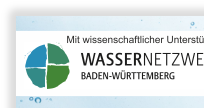In the risk assessment of substances for the aquatic environment, efficacy tests are currently especially investigating mortality, immobilization of organisms or their growth and reproduction after relatively short-term exposure to single substances. Specific as well as direct or indirect effects of chronic stress remain largely or totally unconsidered. These can influence the resilience of organisms and only have a long-term impact on populations.
At the workshop, which was organized within the framework of the Effect-Net project, about 110 representatives from science, industry and public authorities discussed the necessity, possibilities and limits of net methods for identifying the hazard potential of chemicals with a view to preventive and sustainable water protection. The 13 presentations focused on the question of how these methods can be integrated into the risk assessment of substances and into the repertoire of methods for assessing water quality. Special attention was given to the concept of Adverse Outcome Pathways (AOP) as it has already found its way into substance regulation in the US. Furthermore, the topic area was considered in the context of legal and ethical obligation for the preventive protection of humans and the environment. Further information on the presentations can be found in the programme.
The symposium concluded with a panel discussion in which doctoral students from the Effect-Net project discussed with experts the possibilities and limits of integrating new methods from research into regulation. In addition to the lecture programme, posters on the Effect-Net project were presented.

The workshop was organized by Prof. Rita Triebskorn (Animal Physiological Ecology, University of Tübingen) and the team of the Effect-Net project.
The workshop was reported in the journal 'KW Korrespondenz Wasserwirtschaft':
Effektstudien in der Risikobewertung: Das Projekt Effect-Net und Ergebnisse des Workshops


